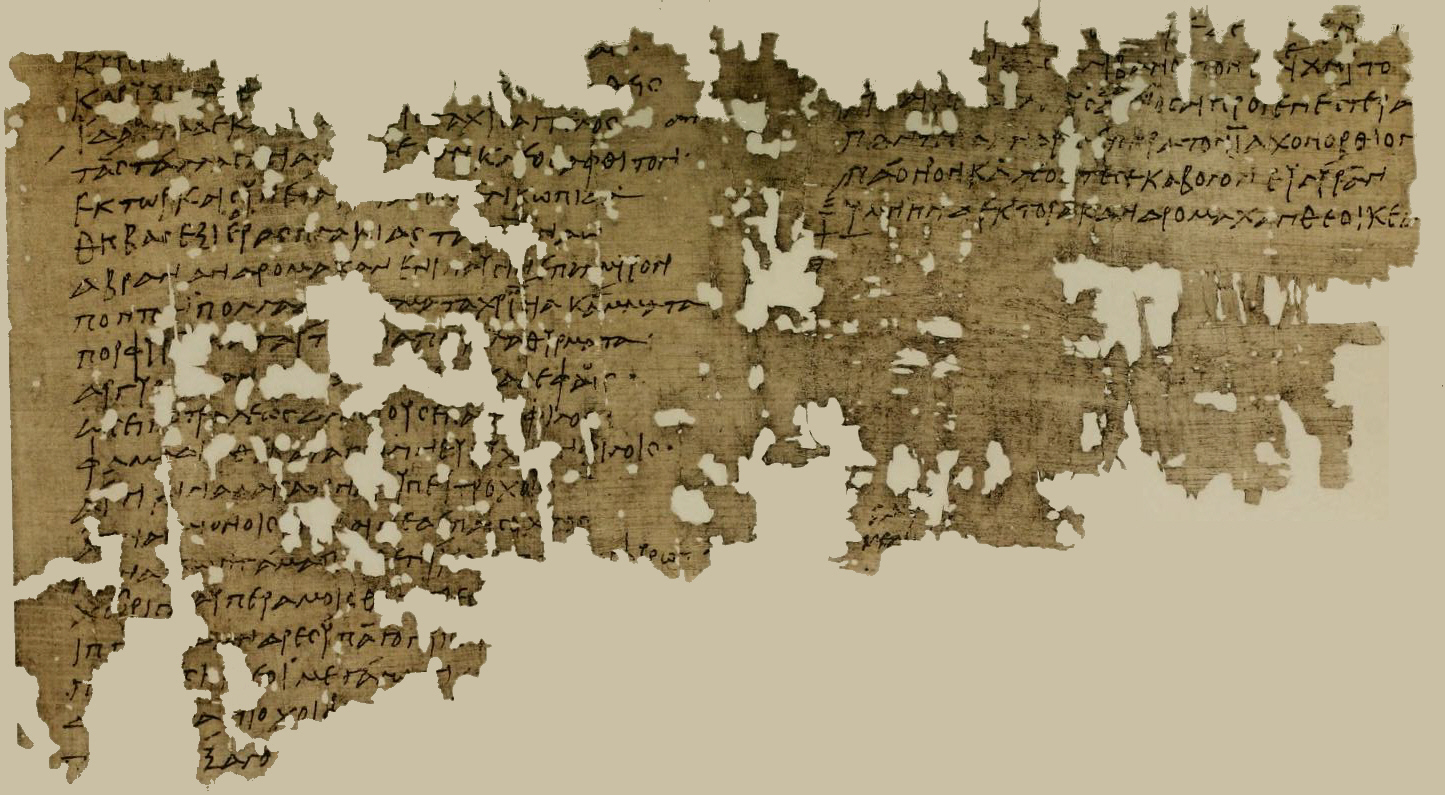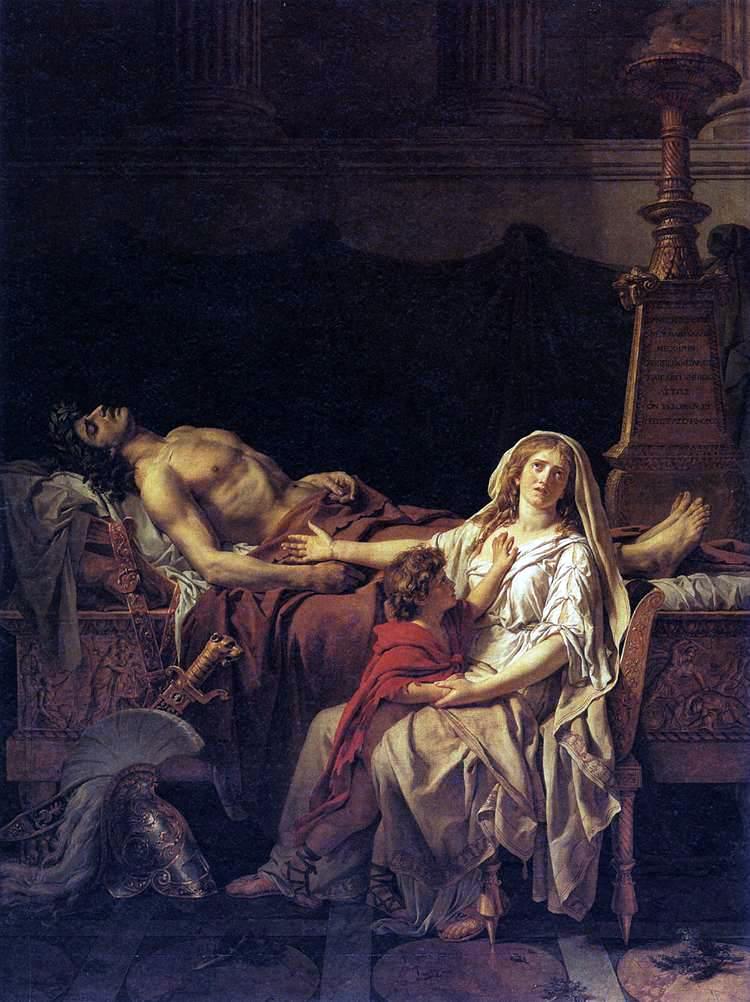Sappho 44 on:
[Wikipedia]
[Google]
[Amazon]
 Sappho 44 is a fragment of a poem by the archaic Greek poet
Sappho 44 is a fragment of a poem by the archaic Greek poet
 Sappho 44 tells the story of the marriage of Hector and Andromache, which is mentioned in Book 22 of the '' Iliad''. It describes Andromache's arrival in Troy, escorted by Hector and watched by the Trojans. The first portion of the poem describes the herald
Sappho 44 tells the story of the marriage of Hector and Andromache, which is mentioned in Book 22 of the '' Iliad''. It describes Andromache's arrival in Troy, escorted by Hector and watched by the Trojans. The first portion of the poem describes the herald
 Sappho 44 is a fragment of a poem by the archaic Greek poet
Sappho 44 is a fragment of a poem by the archaic Greek poet Sappho
Sappho (; el, Σαπφώ ''Sapphō'' ; Aeolic Greek ''Psápphō''; c. 630 – c. 570 BC) was an Archaic Greek poet from Eresos or Mytilene on the island of Lesbos. Sappho is known for her Greek lyric, lyric poetry, written to be sung while ...
, which describes the wedding of Hector and Andromache. Preserved on a piece of papyrus found in Egypt, it is the longest of Sappho's surviving fragments, and is written in epic style suiting its subject. The metre is glyconic with double dactylic expansion
Aeolic verse is a classification of Ancient Greek lyric poetry referring to the distinct verse forms characteristic of the two great poets of Archaic Lesbos, Sappho and Alcaeus, who composed in their native Aeolic dialect. These verse forms wer ...
.
Preservation
The poem was preserved on Papyrus Oxyrhynchus 1232, a fragment of papyrus found at Oxyrhynchus in Egypt and first published in 1914, now in the collection of the Bodleian Library at Oxford University. The papyrus dates to the first half of the third century AD. Fragment 44 is the longest piece of Sappho's poetry preserved. A second papyrus,Papyrus Oxyrhynchus 2076
Papyrus ( ) is a material similar to thick paper that was used in ancient times as a writing surface. It was made from the pith of the papyrus plant, ''Cyperus papyrus'', a wetland sedge. ''Papyrus'' (plural: ''papyri'') can also refer to a ...
, confirms Sappho's authorship, and shows that the poem came at the end of the second book of the Alexandrian edition of her works; a citation in Athenaeus also supports this attribution.
Poem
The poem's meter is the glyconic with doubledactylic expansion
Aeolic verse is a classification of Ancient Greek lyric poetry referring to the distinct verse forms characteristic of the two great poets of Archaic Lesbos, Sappho and Alcaeus, who composed in their native Aeolic dialect. These verse forms wer ...
(''gl2d'') – each line is of the form "xx -uu -uu -uu- ux", where "-" denotes a long syllable, "u" a short syllable, and "x" a syllable which could be either long or short. In the Alexandrian edition of Sappho's poems, it was included in Book II.
Sappho's authorship of the poem has been contested. Scholars such as Edgar Lobel
Edgar Lobel (24 December 1888 – 7 July 1982) was a Romanian-British classicist and papyrologist who is best known for his four decades overseeing the publication of the literary texts among the Oxyrhynchus Papyri and for his edition of Sappho a ...
and Ulrich von Wilamowitz-Moellendorf
Enno Friedrich Wichard Ulrich von Wilamowitz-Moellendorff (22 December 1848 – 25 September 1931) was a German classical philologist. Wilamowitz, as he is known in scholarly circles, was a renowned authority on Ancient Greece and its literatu ...
have doubted that Sappho wrote the work due to its epic style. However, the poem was accepted as authentic in the Alexandrian edition of Sappho's poetry, and modern scholars generally agree that she wrote the poem.Spelman, Henry. "Trojan Myth and Literary History". ''Mnemosyne'': 2016. p.3.
Idaeus Idaeus or Idaios ( grc, Ἰδαῖος) is a given name. People with the name include:
Mythology
* Idaeus, a Trojan, charioteer of Priam
* Idaeus, a Trojan, the son of Dares
* Idaeus, a son of Dardanus (son of Zeus)
* Idaeus, one of the three sons ...
announcing the imminent arrival of Hector and Andromache to the city, and the Trojans preparing to greet them. Following this, a portion of the poem – presumably dealing with the arrival of Hector and Andromache – is missing; the length of this missing section is uncertain. The final section describes the wedding celebrations, with music, wine, and the men of Troy singing a hymn to Apollo.
The metre and style of the poem evoke Greek epic, and the poem is often interpreted as an intertext
Intertextuality is the shaping of a text's meaning by another text, either through deliberate Composition (language), compositional strategies such as quotation, allusion, calque, plagiarism, translation, pastiche or parody,Gerard Genette (1997) ' ...
to the ''Iliad''. The ''Iliad'' did not have its later status as the canonical epic poem in sixth-century Lesbos, however, and it is difficult to tell how many of the allusions in the poem to the epic cycle
The Epic Cycle ( grc, Ἐπικὸς Κύκλος, Epikòs Kýklos) was a collection of Ancient Greek epic poems, composed in dactylic hexameter and related to the story of the Trojan War, including the ''Cypria'', the '' Aethiopis'', the so-cal ...
are specific to the ''Iliad'', rather than being traditional. Adrian Kelly describes the poem's reinterpretation of an epic narrative to foreground the perspective of women as characteristically Sapphic.
The poem may have been written for performance at a wedding. However, as early as 1966, some scholars had begun to question this belief, noting that the story of Hector and Andromache – culminating in the death of Hector and the enslavement of Andromache – is not particularly suitable for a wedding. Lawrence Schrenk argues that the poem specifically alludes to two scenes in the ''Iliad'' – firstly, Andromache's seeing Hector's body being dragged from the battlefield and the subsequent flashback to her wedding in Book 22, and secondly, the recovery of Hector's corpse in Book 24.
The poem has received relatively little scholarly attention, and many scholars consider it not to be one of Sappho's best works. However, Schrenk argues that the poem is more subtle than has often been appreciated.Schrenk, Lawrence P. "Sappho Frag. 44 and the 'Iliad'". ''Hermes'': vol. 122, issue 2, 1994. p.149.
References
{{Sappho Ancient Greek poems Works by Sappho